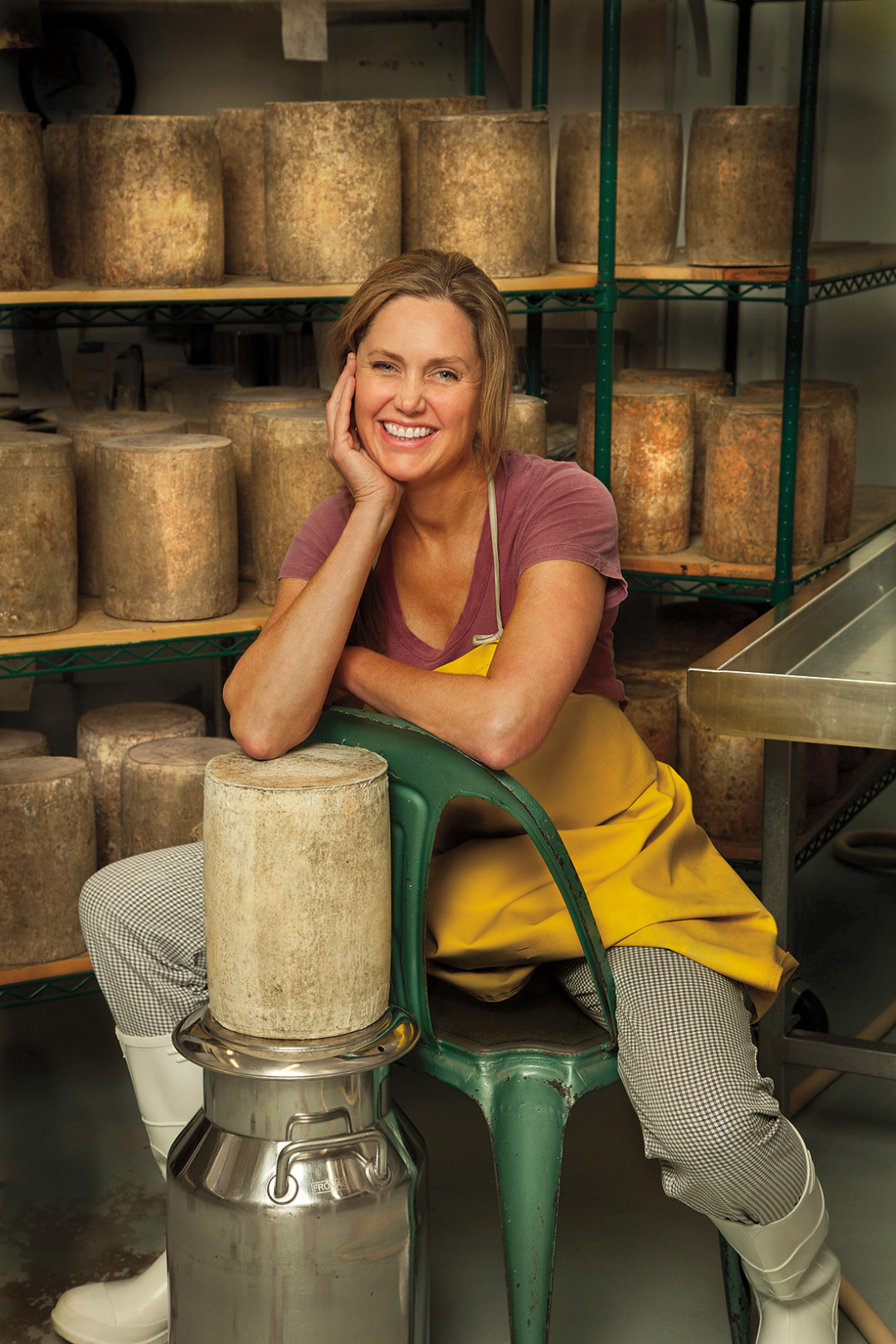Dairy Queen

Image: Jim Paussa
Aspen Sojourner: Congratulations on snagging three awards at the American Cheese Society competition this year.
Wendy Mitchell: It was pretty amazing. They’re calling out the names of the winners—all of these people you idolize—and you’re like, Oh my god, they just said my name!
AS: Not bad for a five-year-old company. How did it all begin?
WM: My family is from Texas, but we had a house in Aspen for a long time. We wanted to raise our kids here but decided to spend a year abroad before we moved. My husband did a one-year master’s program in Scotland, and I got this idea in my head: I’m gonna make cheese; that’s my next job. When we went to the UK, I started writing letters to people whose cheese I liked….
AS: You woke up one day and decided to open a creamery?
WM: I had read a magazine article about a woman in California who makes cheese. Her creamery was organized, clean, and sterile, almost like a hospital. Little cheeses were lined up on the aging racks, and everything was labeled. At the time, I had two very small children, the chaos of plastic crap everywhere. I was in this place where my life felt sort of out of control and saw this fantasyland where everything is clean and organized.
AS: So you apprenticed with well-known cheesemakers overseas?
WM: I learned a lot from Robin Congdon, who was making Ticklemore. Our Cabra Blanca is made in the same style, with a different culture. I visited Val Vines, who’s close to eighty now. It was like working with a microbiologist—there’s this constant flux, the milk is always changing throughout the season. You’re reacting every day, adjusting.
AS: What can’t you control?
WM: We live in a very dry climate, and the humidifiers are constantly breaking down. I feel like I’m a plumber half the time! You don’t have any wiggle room. You can’t tell the goats, “Hey, the humidifiers aren’t working. Could you just not give us any milk today while we deal with this?”
AS: Why goats, anyway?
WM: In the Colorado landscape, it just makes sense. Goats don’t need a super-lush, green pasture. I love cow’s milk cheeses, but this didn’t seem like the right environment to raise cows. Same with sheep. And you can have more goats per acre. They’re easier to manage, and they’re cute. They move around in a group—kind of like when women go to the bathroom together.
AS: Herd mentality.
WM: They’re like dogs. They’ll rub on your leg and follow you around. Goats have that reputation of being curious or troublesome—you know, the goat eating the tin can or jumping the fence—but they’re really mellow to me.
AS: You’ve mentioned that springtime can be a little crazy, though.
WM: Goats have about two babies each, so if we’ve bred two hundred, we’ll have four hundred babies, usually within two-and-a-half months. We bottle feed all the babies; the moms milk on the machine. We take the milk from the farm in Paonia and drive over McClure Pass to the creamery in Basalt. During peak season, we’re driving milk and we’re making cheese every day of the week.
AS: Why do chefs go wild for early spring chèvre?
WM: That first batch, in the second or third week of March, is so delicious, with grassy, bright notes. There’s a tartness to it. That milk would be nourishing those spring babies, so it’s fresh and clean and wet. Our aged cheeses are sold from four weeks to eighteen months old. Chèvre is sold four days after it was milk.
AS: Any surprises about cheesemaking?
WM: It’s a really physically intense job. You’re collecting whey and lugging buckets around. If you’re making cheddar, you’re bent over the cheese-making vat and stirring with your arms in the curds. It’s like doing the breaststroke for an hour!
AS: What’s next for Avalanche Cheese?
WM: The byproduct of a dairy is that you’re raising a lot of animals, and you can’t milk them all. So we use a lot of the offspring for meat. We’re raising some pigs and hoping to do some cured meats with goat and pork. It’s kind of the same thing: the controlled fermentation of meat as opposed to milk. I hope it works out, because I love salumi.
AS: OK, we must ask: Got any cheesy jokes?
WM: Why does everyone use cheesy in a negative way? If you say “cheesy,” shouldn’t that mean, “That’s so awesome”?
AS: Ha, whey cool.













































